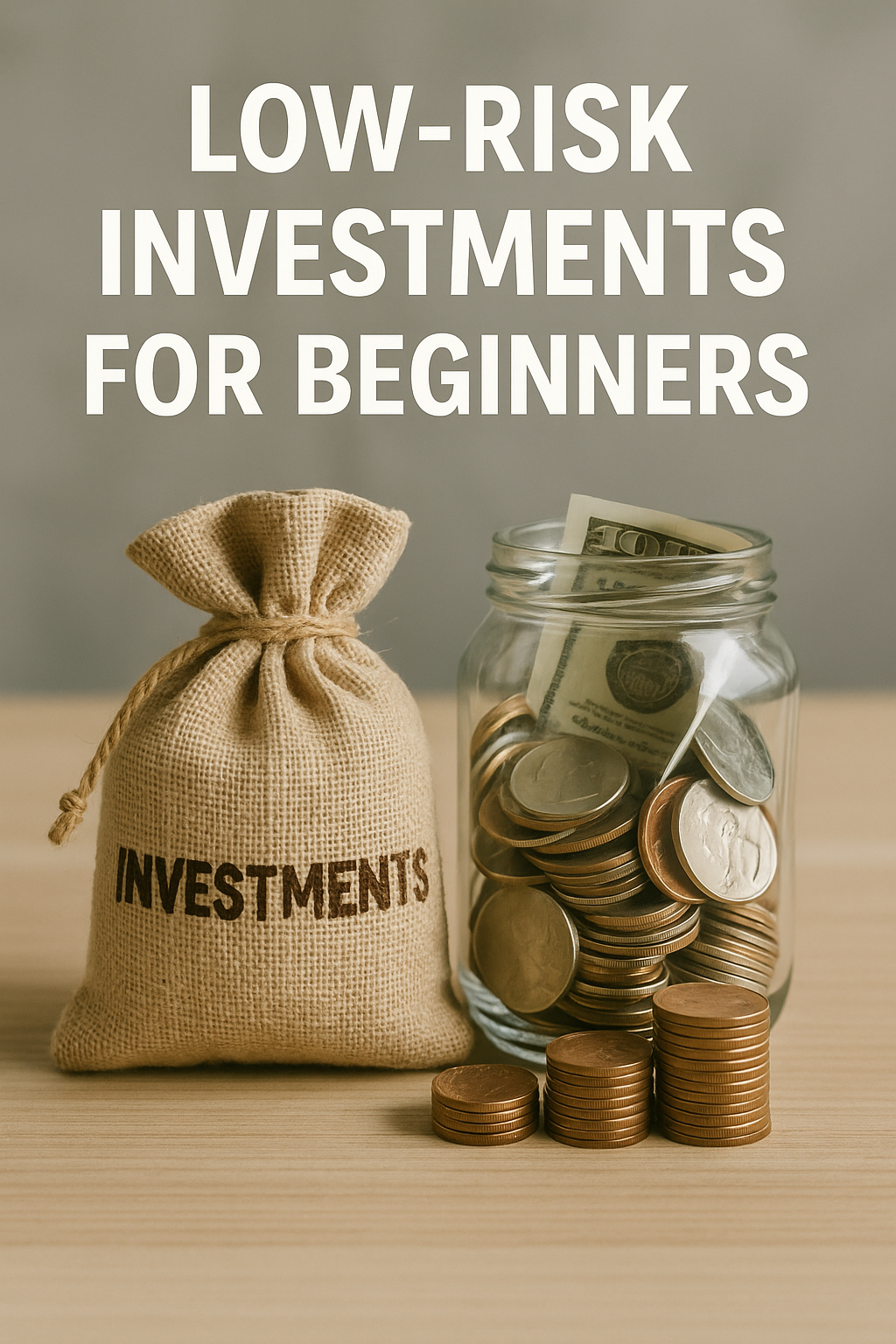When you’re just starting your investment journey, the idea of risking your hard-earned money in the stock market can be intimidating. The good news? There are plenty of low-risk investment options that offer stability, steady returns, and a great starting point for building wealth.
This article will walk you through the best low-risk investments in the U.S., explain how they work, and help you decide which ones fit your goals and risk tolerance.
What Is a Low-Risk Investment?
Low-risk investments are financial products that offer predictable, modest returns with minimal chance of losing your initial capital (also known as your principal).
Common traits:
- Capital preservation is the priority
- Typically lower returns than high-risk assets like stocks
- Ideal for beginners, retirees, and conservative investors
These investments may not make you rich overnight, but they can offer peace of mind and financial security.
1. High-Yield Savings Accounts
A high-yield savings account is a type of savings account that offers higher interest rates than traditional accounts—often through online banks.
Benefits:
- FDIC-insured (up to $250,000)
- No risk of losing money
- Interest rates around 4–5% APY (as of 2024)
Best for:
- Emergency funds
- Short-term goals
- Parking cash you might need soon
Popular platforms: Ally, Marcus by Goldman Sachs, Discover, SoFi, Capital One
2. Certificates of Deposit (CDs)
CDs are time deposits offered by banks. You agree to leave your money for a fixed period (like 6 months, 1 year, or 5 years) in exchange for a guaranteed interest rate.
Benefits:
- FDIC-insured
- Guaranteed return
- Higher rates for longer terms
Trade-offs:
- Early withdrawal penalties
- Less flexibility
Tip: Use a CD ladder to stagger maturity dates for better liquidity and yield.
3. U.S. Treasury Securities
Treasury securities are government-backed investments that include:
- Treasury Bills (T-Bills): Mature in 1 year or less
- Treasury Notes: Maturities from 2 to 10 years
- Treasury Bonds: Long-term (20 or 30 years)
- Series I Savings Bonds (I Bonds): Adjusted for inflation
Why they’re great:
- Backed by the U.S. government
- Virtually risk-free
- Interest is exempt from state and local taxes
Where to buy: TreasuryDirect.gov
4. Money Market Accounts
Money market accounts combine the features of a savings account and a checking account—with higher interest rates and limited check-writing capabilities.
Features:
- FDIC-insured
- Higher interest than standard savings
- May have minimum balance requirements
Ideal for: People who want better returns than a regular savings account with access to their money.
5. Bonds and Bond Funds
Bonds are loans you give to governments or companies. In return, they pay you interest and eventually return the principal.
Safer options:
- U.S. Treasury bonds
- Municipal bonds (tax-free income)
- Corporate bonds from stable companies
If you prefer diversification, try bond ETFs like:
- iShares Core U.S. Aggregate Bond ETF (AGG)
- Vanguard Total Bond Market ETF (BND)
Risk level:
- Lower than stocks, but not zero
- Bond prices can drop if interest rates rise
6. Fixed Annuities
A fixed annuity is an insurance product that guarantees a fixed return over time.
Pros:
- Predictable income
- Principal protection
- Tax-deferred growth
Cons:
- Limited liquidity
- Early withdrawal penalties
- Can be complex—read the fine print
These are often used for retirement income strategies, especially by conservative investors.
7. Robo-Advisors with Conservative Portfolios
Robo-advisors are automated investment platforms that build and manage your portfolio based on your goals and risk tolerance.
Why they’re beginner-friendly:
- Low fees
- Automatically diversified
- Can choose low-risk or “conservative” portfolios
Top choices: Betterment, Wealthfront, SoFi Invest
You can start with as little as $100, and the platform handles everything for you.
Tips for Getting Started
- Define your goal: Are you saving for 1 year or 10?
- Know your risk tolerance: Conservative doesn’t mean zero growth.
- Diversify: Don’t put all your money into one vehicle.
- Watch out for fees: Even low returns can be eaten by hidden costs.
- Review regularly: Reassess your plan yearly or when goals change.
Final Thoughts: Safe Doesn’t Mean Stagnant
Low-risk investments are a great entry point for beginners—and a smart strategy for anyone seeking stability and security.
Start with products that match your comfort level. As you grow more confident, you can explore higher-return options. For now, your goal is to build the habit of investing, protect your money, and let time do the heavy lifting.
The best investment strategy is the one you actually follow. Begin with confidence, and build from there.
